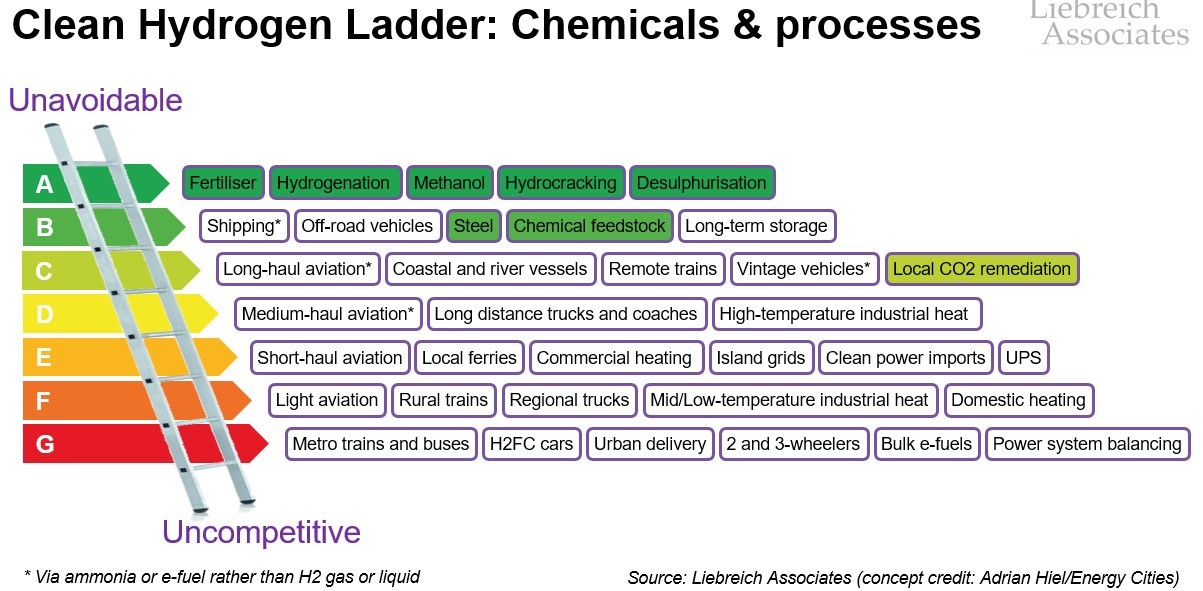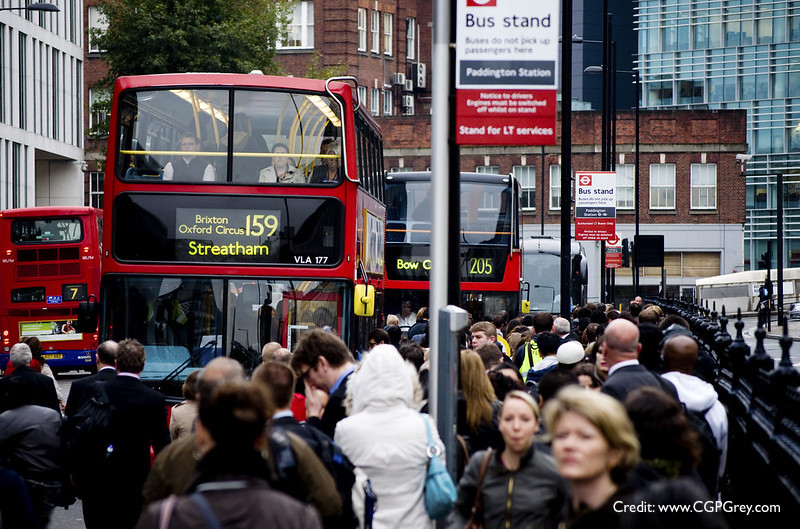July 2020 Newsletter: Among the Covid-19 carnage, green shoots
It’s July. It seems hard to believe we are just half-way through this extraordinary, difficult year.
I think my March piece for BloombergNEF (Covid-19 – The Low-Carbon Crisis), has been aging fairly well. We are indeed on track for a fall in energy-related CO2 emissions of more than 5% – with the International Energy Agency estimating a fall of 8% (consisting of a 6% drop in energy use but an even sharper drop in the use of coal-fired power). It has become clear we are in the throes of a dramatic recession. Oil prices did indeed crash to unprecedented levels – though they have recovered somewhat since – and Saudi Arabia was quickly forced to give up its ill-advised price war for market share. And we are indeed, as predicted, in a “two-speed world, in which some countries have all but eliminated the virus but in others it rages out of control”, although I would never have predicted that the US would be one of the countries failing so tragically to suppress the pandemic.
My March BloombergNEF piece also laid out a few principles for a green post-pandemic stimulus, which spurred a number of governments to make contact for a chat. Governments’ policy interventions will decide whether the trends driving the world towards peak emissions, which I wrote about at the end of 2019, accelerate or are put on hold for the next few years. The EU is leading the way with its €750 billion combined Recovery and Green Deal plan; the US response will depend on the outcome of the Presidential election in November; Japan, Korea and India have made encouraging noises about retiring coal and promoting clean energy; the early moves by Chancellor Rishi Sunak have been positive in the UK. But as always it is China which is key – and hard to read, with different internal power brokers pushing for high- and low-carbon recovery plans.
In my Q1 newsletter I mentioned that Zeelo, the smart commuter bus company which I chair, was pivoting to provide Covid-safe commuter services to employers of key workers. We lost 80% of our pre-Covid revenues the moment the lock-down hit, but replaced the lost business four times over with new clients, including Amazon. We also set up a JV in Italy and raised sufficient additional funding (including matching by the UK’s Future Fund) to get through to 2022. I thought I had moved quickly when I pivoted New Energy Finance away from its focus on investment banks and hedge funds, and towards governments and utilities, in 2007/08!
In May, Sam Ryan, Zeelo’s CEO and I jointly authored this piece on the longer term impacts of Covid: Public Transport’s Covid-19 Capacity Crunch & What To Do About It. TLDR: transit systems will be under extreme stress for years, so if we don’t want to see a return to cars and massive congestion, we need to do three things: restore trust in public transport, promote active travel and integrate smart mobility services (like Zeelo!) into our transit systems.
My June piece for BloombergNEF, Energy Efficiency Key To Covid Recovery, was a clarion call for energy efficiency to play a key role in any post-Covid economic recovery plan. I called it “the Swiss Army Knife” of stimulus spending, because it can immediately put money into the hands of people who will spend it (short-term multiplier), while at the same time delivering significant improvement in our asset base and reduction in operating costs (long-term multiplier), as well as helping to reduce emissions (reducing climate risk). Of course spending on EV charging infrastructure and distributed generation and storage would have a similar three-way impact. That’s not to say there isn’t a role for mega-projects – hydrogen, public transportation, power generation, interconnections, giga-factories and the like – just don’t expect them to deliver an immediate multiplier effect.
The past quarter also saw the IEA’s Global Commission for Urgent Action on Energy Efficiency, on which I served, publish its 10 Recommendations. All 10 recommendations are good, but I was particularly pleased with Number 4, Mobilising Finance. I continue to work as an advisor to SDCL, Europe’s leading specialist investor in energy efficiency, and in May I recorded a series of video conversations with its founder and CEO, Jonathan Maxwell. In June I helped close the Australian Energy Efficiency Council’s 2020 National Conference with a (virtual) conversation with their CEO Luke Menzel.
In June I also took on a new advisory role with Eavor Technologies, the global leader in advanced geothermal systems. A quick primer: there are four types of geothermal energy: ground-source heat pumps (nice, but only for heating and cooling); conventional geothermal power (nice, but only for places with very high subsurface temperatures and steam); Enhanced Geothermal Systems (not so nice, involves fracking and injecting water – and after four decades of investment has not yet delivered a competitive project); and now Advanced Geological Systems, or closed loop. In the early years of New Energy Finance we had a dedicated geothermal team, but we stood it down. Over the past two years, the sector has undergone something of a renaissance, driven by phenomenal developments in horizontal drilling technology.
Eavor is based in Alberta, its DNA is from the oil and gas industry. Its approach is to drill long laterals in impermeable rocks, join them up and seal them under the surface to create a closed heat transfer loop at any temperature 120C or above. There is no fracking, no injection, no produced water or solids, no contamination of aquifers, no earthquake risk, no CO2 release, no massive need for land, no ruining protected views and no meaningful geographic restrictions. That’s already a lot of advantages! But what is even more intriguing in a world of wind and solar power is the potential to use Eavor in load-following mode. By oversizing the generator vis-à-vis the subsurface loops, heat keeps flowing into the heat transfer fluid even if you slow it down. It has in-built energy storage, and unlike other thermal technologies, you are only under-utilising a small part of your capital if you turn down your output for up to a day or so. Right now Eavor should be competitive where there is a high geothermal tariff (eg Germany) or on islands with high power prices set by diesel. But drilling has a steep learning curve, so I think closed loop geothermal could be a BSD (Big Scalable Deal) and if anyone can make it work, it’s CEO John Redfern and team.
Since the beginning of this year I have been sensing a quickening of pace on technology. While we may have sufficient solutions needed to scale clean energy and transport for the coming decade, we won’t get to net zero with wind, solar and batteries alone (as I explained in Beyond Three Thirds, The Road to Deep Decarbonization). Over the past six months I have met a number of folks working on filling the technology pipeline for the longer term. But they didn’t know each other, so I invited them on to an informal Zoom call to noodle their shared challenges. They seemed to find it useful, so next week we are going to do Climate Tech Noodle 2. If you think you have something to add – senior folks only please, actively investing in or accelerating early stage and growth companies – send a short pitch to my Venture Associate, Piotr. No entrepreneurs at this stage please.
Finally, I have been working feverishly throughout lockdown on a new media project! Tomorrow sees the launch of Cleaning Up – a weekly video/podcast series in which I have a chat and a drink with a different leader in clean energy, clean transportation, climate finance or sustainable development. Over nearly two decades at the heart of the low-carbon transition I have met so many impressive people and made so many great friends.
My first three guests on Cleaning Up will be Professor Cameron Hepburn (Director of the Smith School of Enterprise and Environment at Oxford); Rachel Kyte (former climate supremo at the World Bank, CEO of Sustainable Energy for All, and now Dean of the Fletcher School of Law and Diplomacy), and Anthony Slumbers (art historian and guru on proptech and the future of real estate). If I told you who we have lined up after these three rock stars I would be giving the game away, but if you follow @CleaningUp on Twitter or sign up here for news and alerts you will never miss an episode. It is going to be interesting, inspiring and great fun – at the very least you can check out my lockdown beard, which has a life of its own.
And with that, I’ll leave you for another quarter. Stay safe, enjoy Cleaning Up, and I’ll see you in three months!
Michael
Terms of use: photos and other media may be used exclusively for the purpose of publicising an upcoming or past event involving Michael Liebreich, or to illustrate an article written by him. Their use must be accompanied by a clear indication of copyright in the following form:
© Liebreich Associates/name of photographer. Photos or other media downloaded in this way remain the property of Liebreich Associates Ltd. Any infringement of these terms of use may result in legal action by Liebreich Associates Ltd or by the respective photographer or rights holder.





